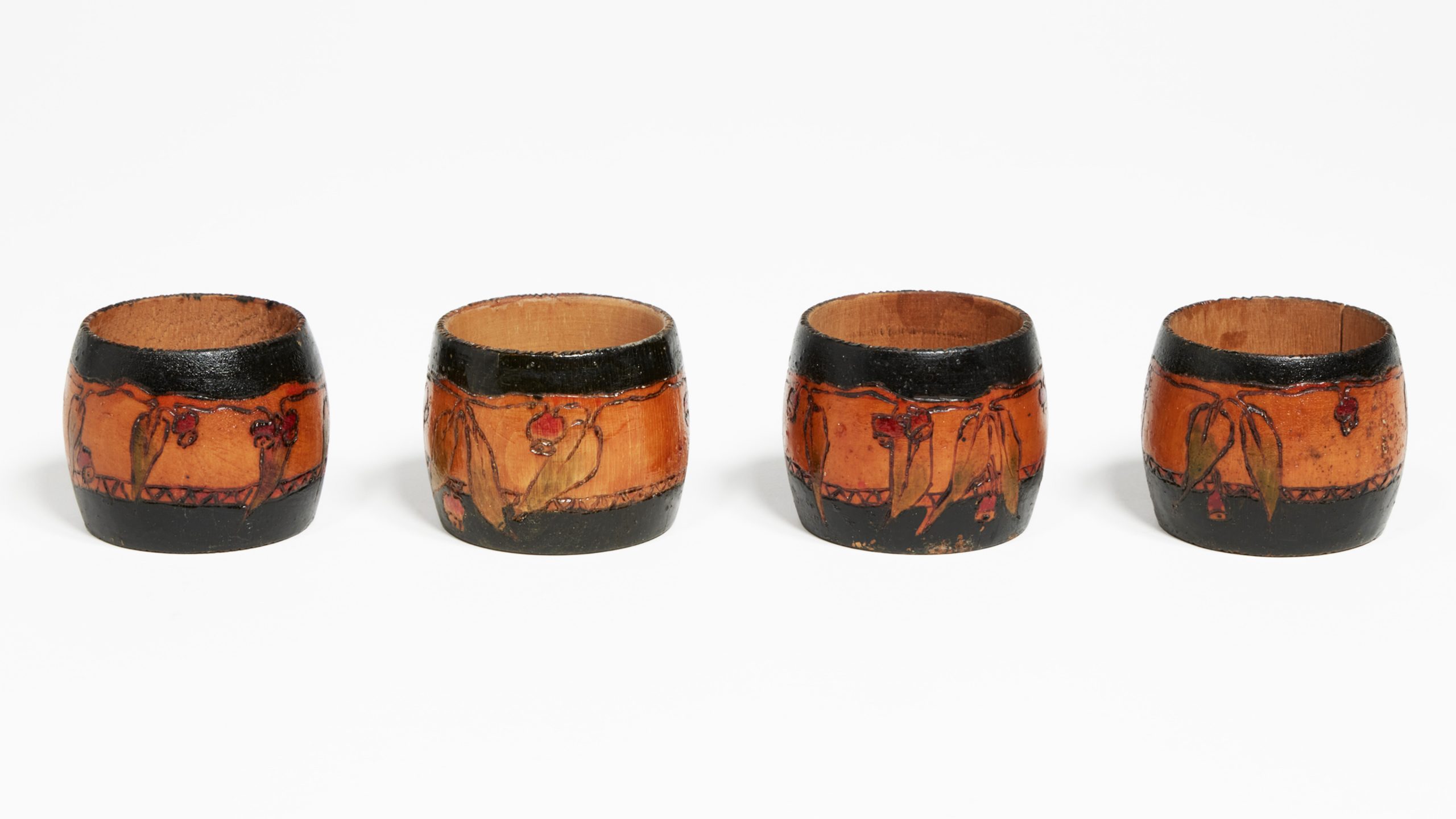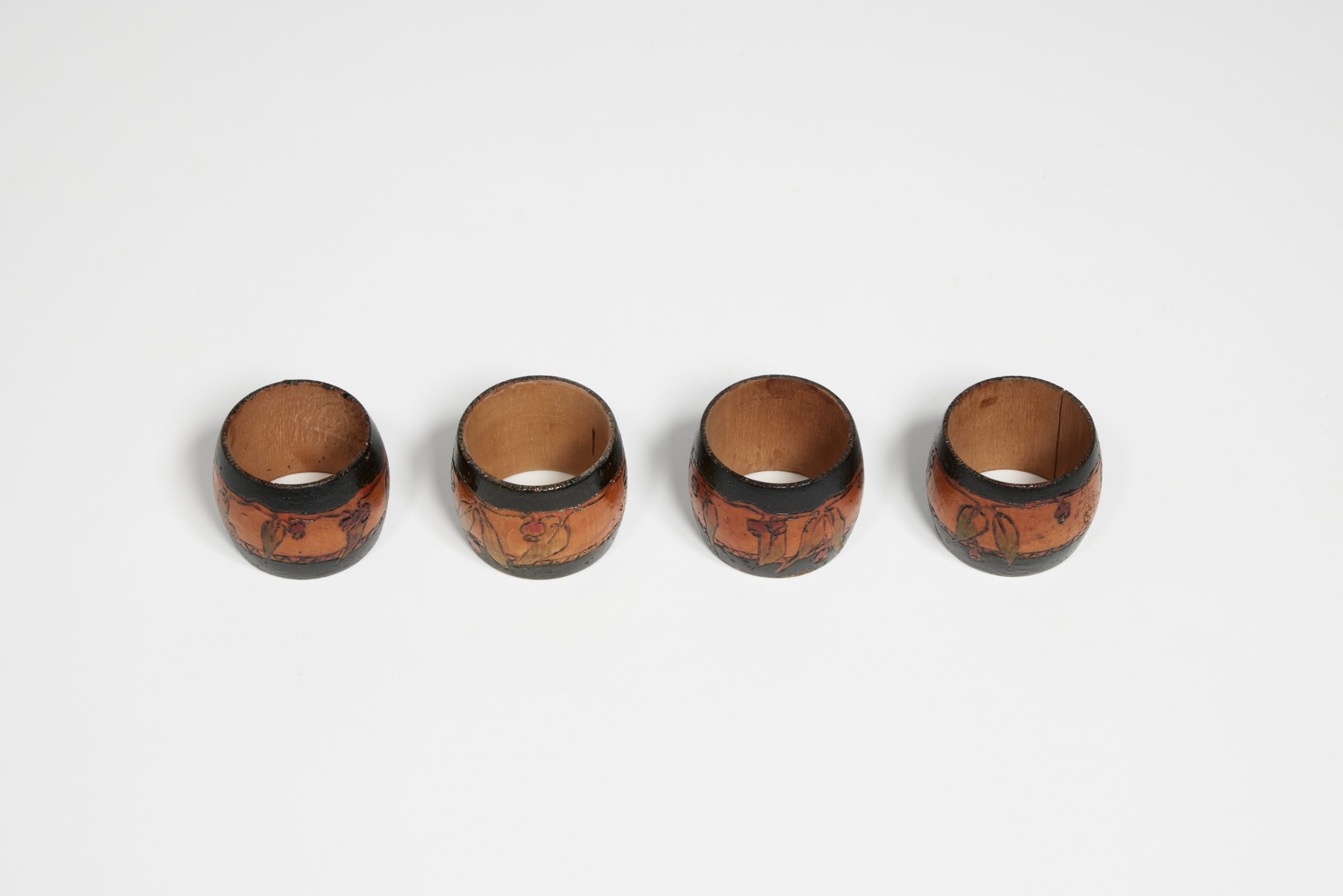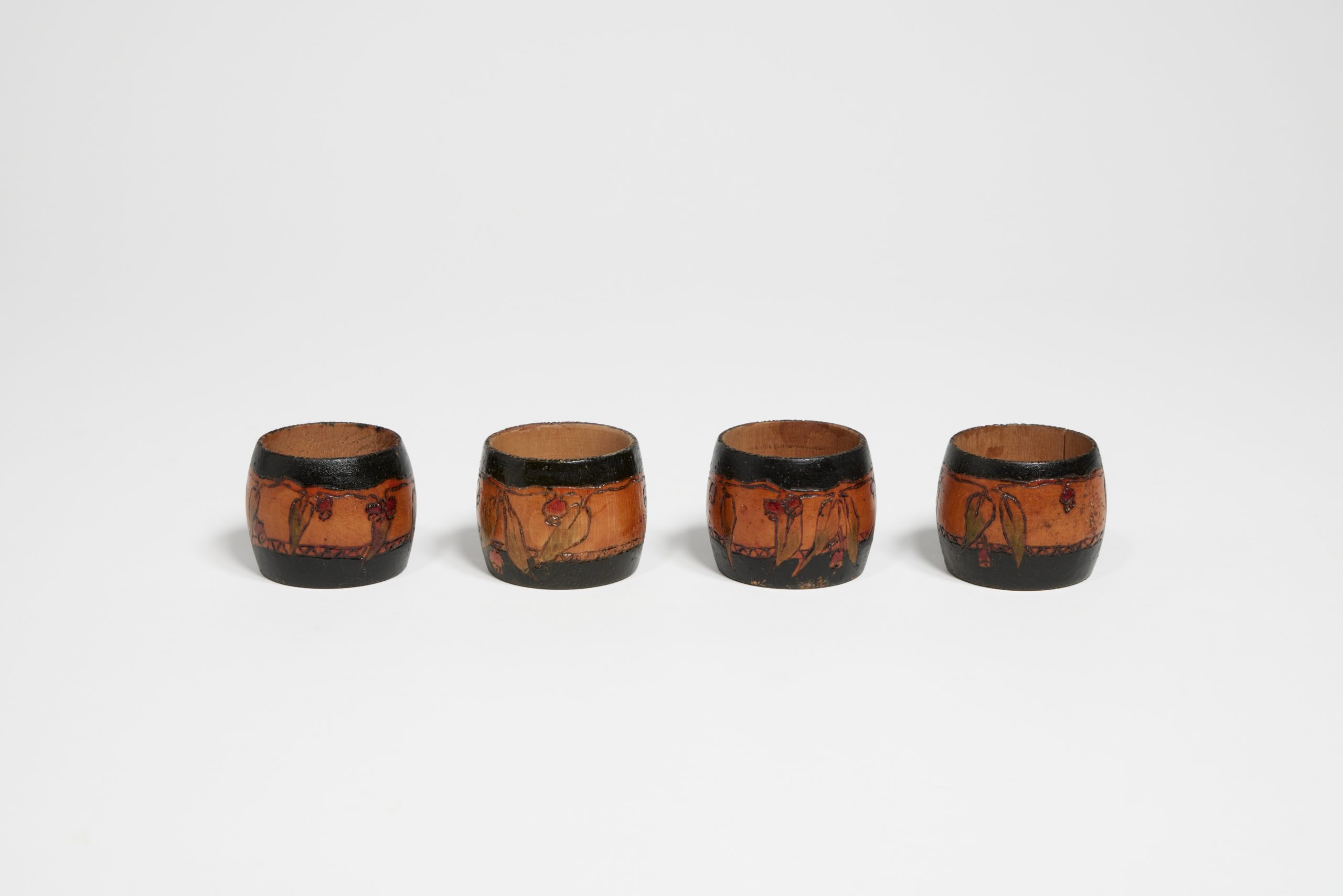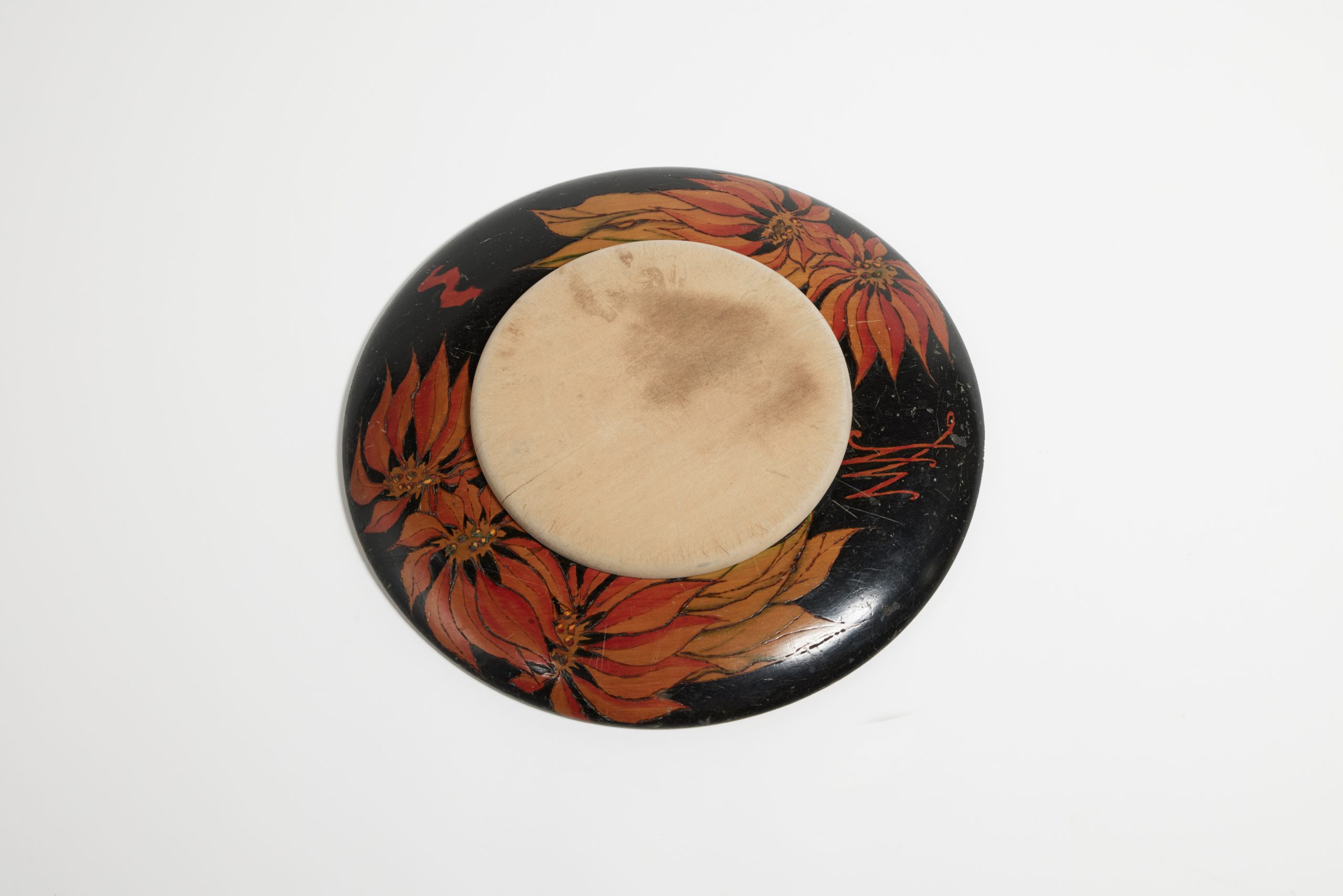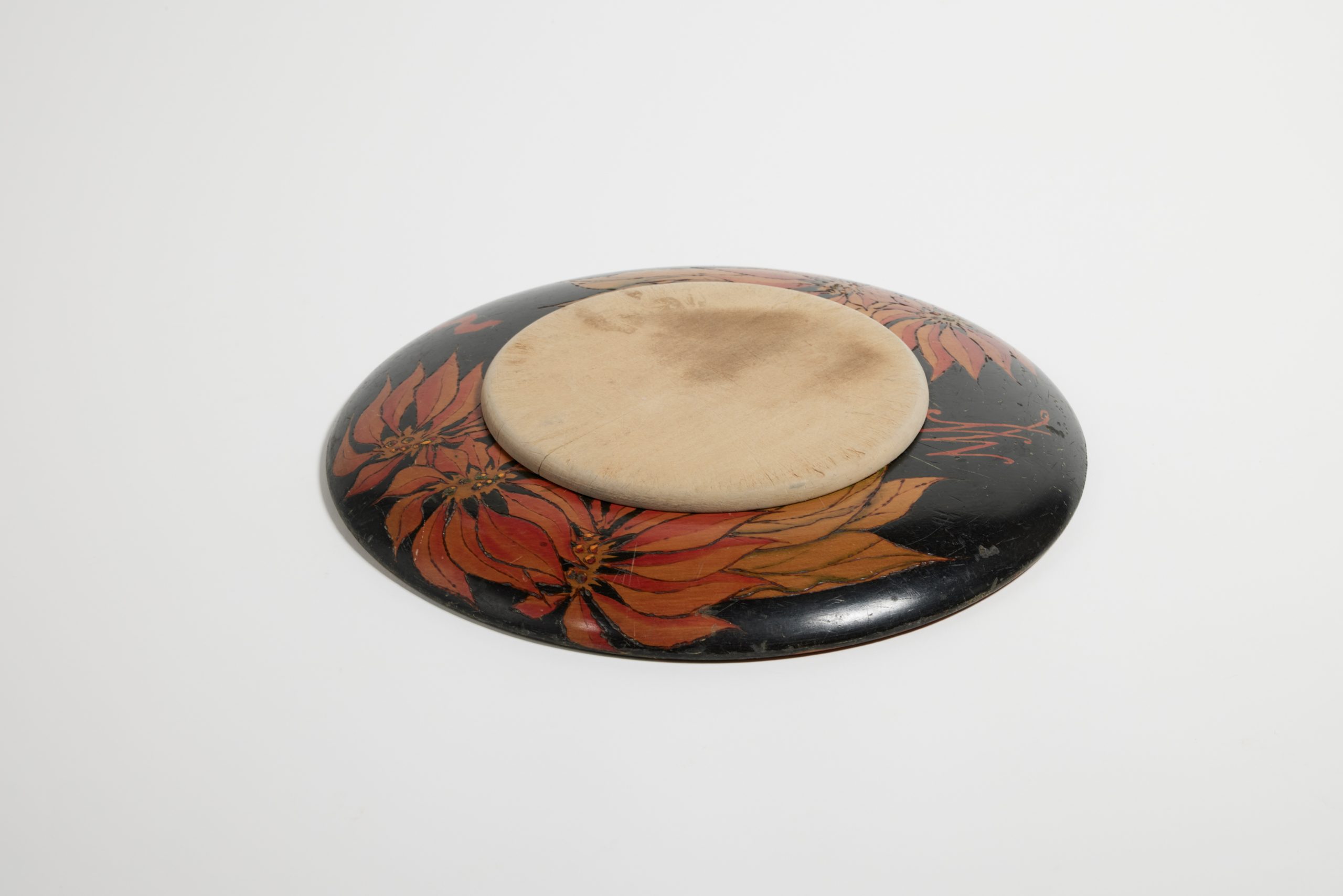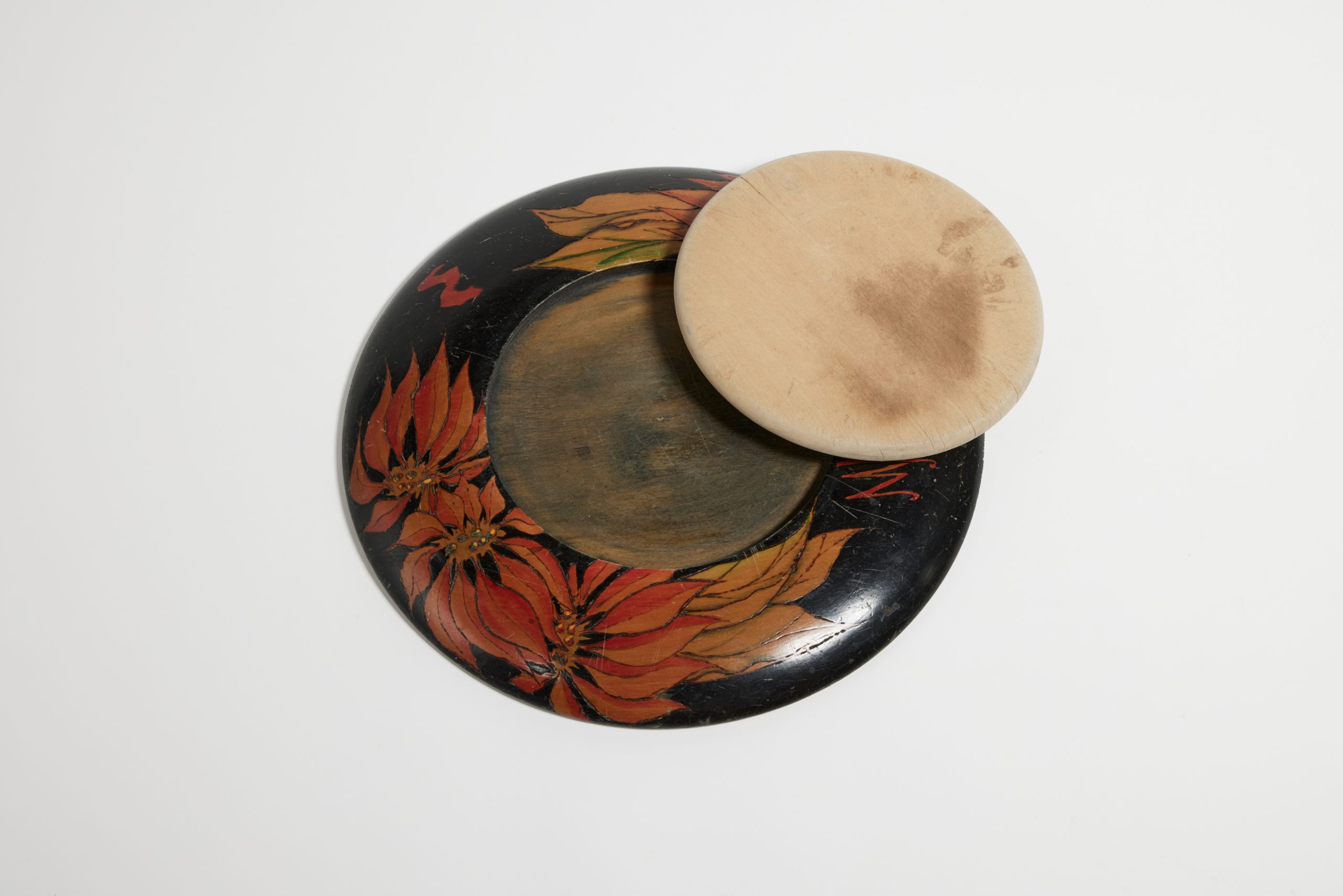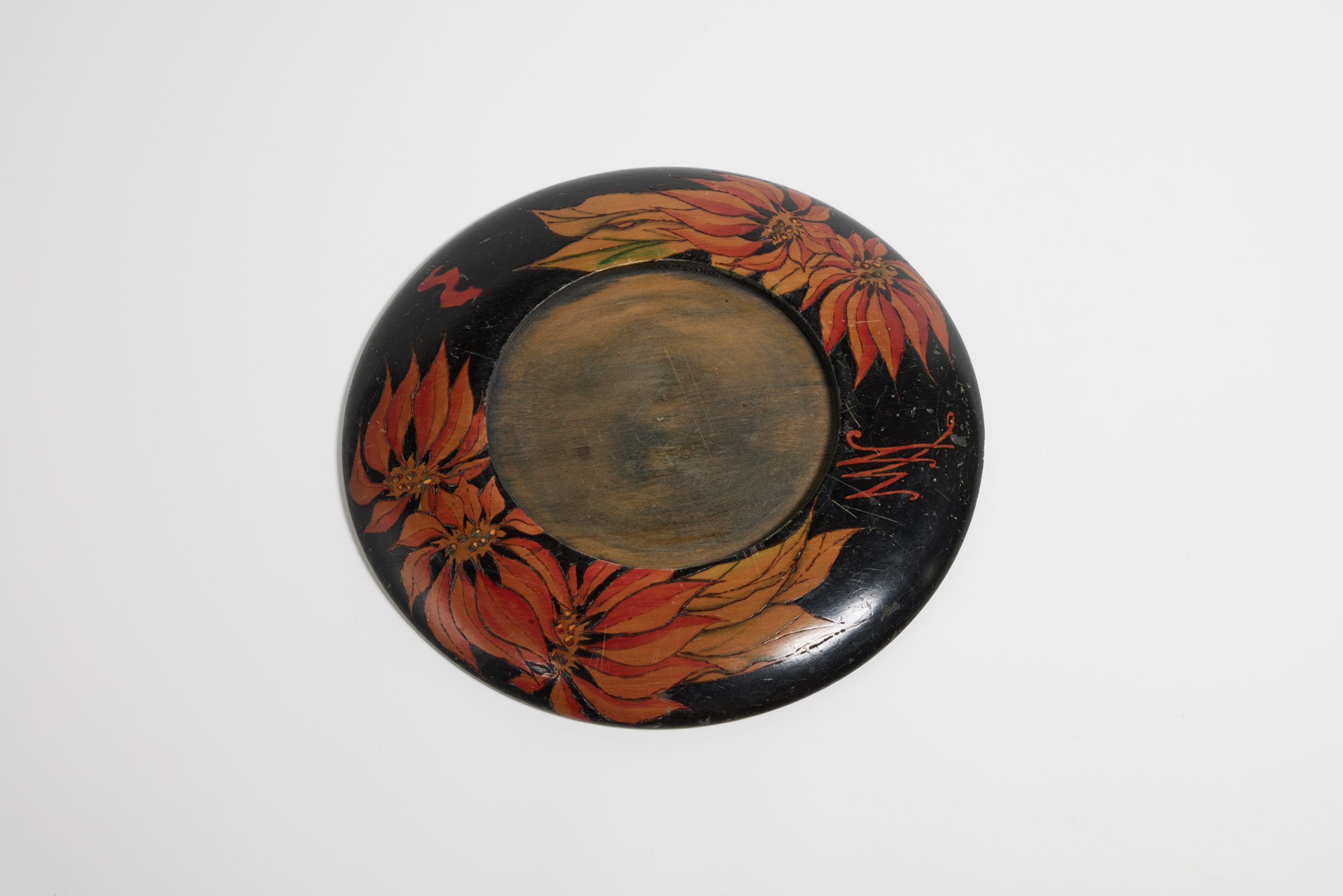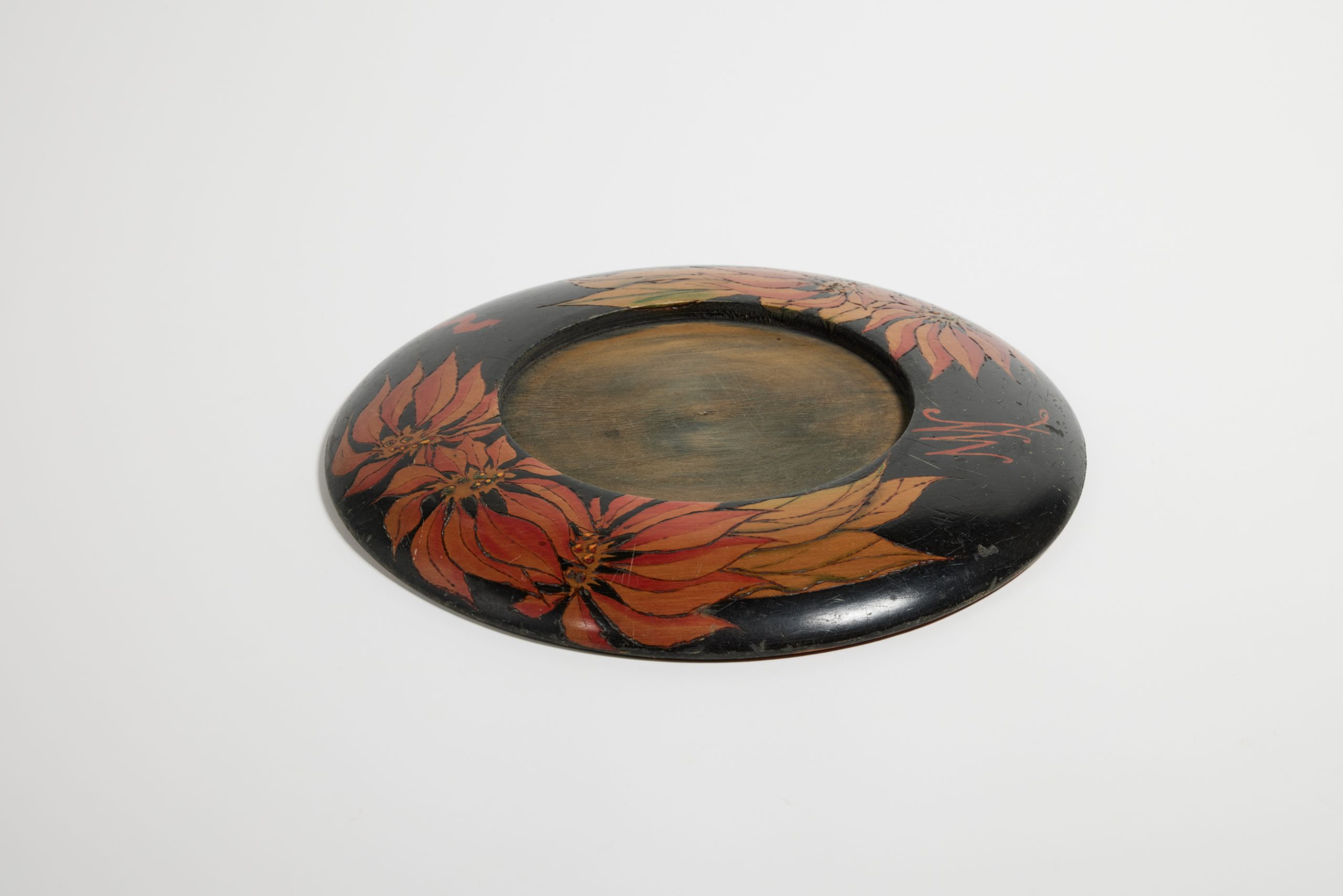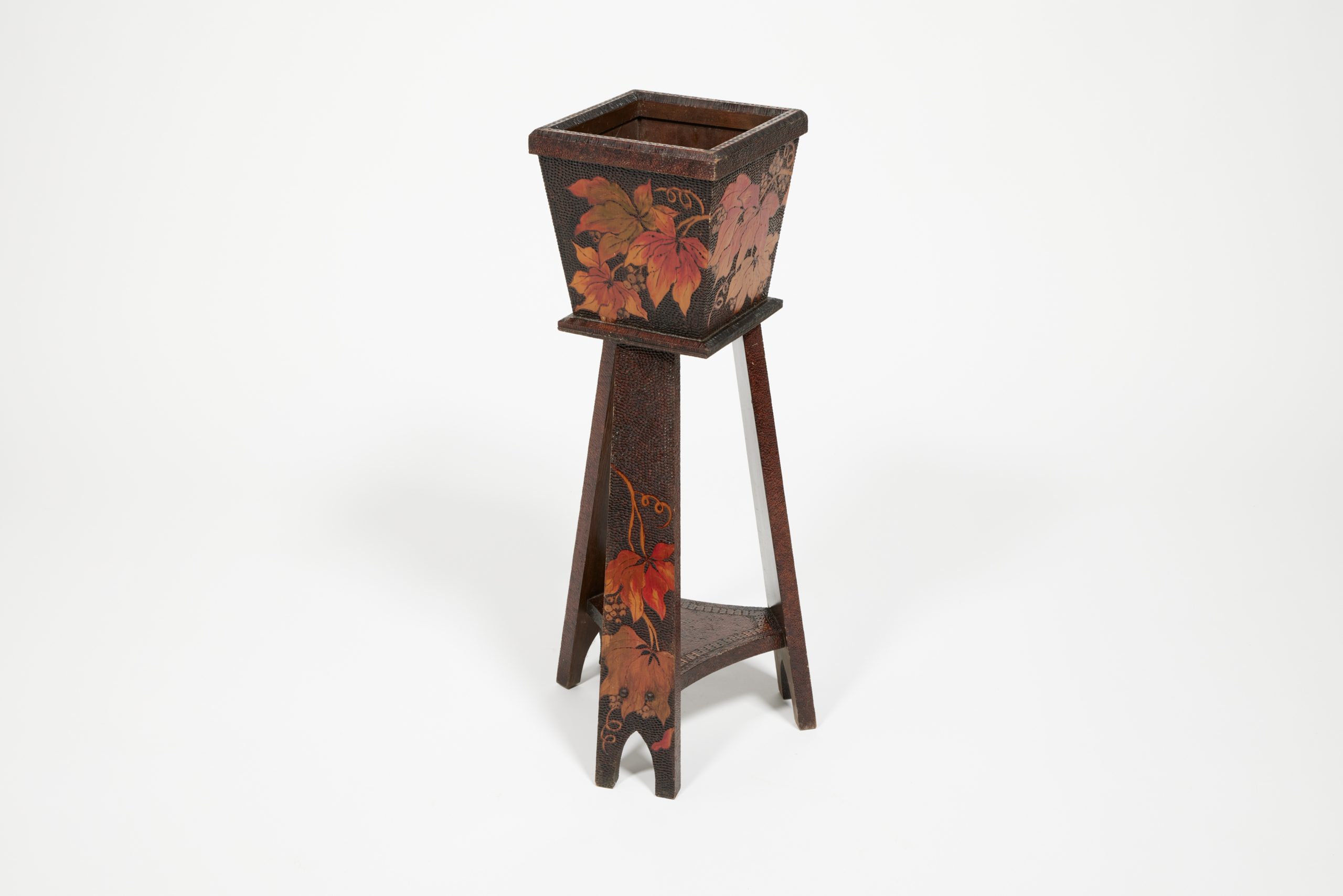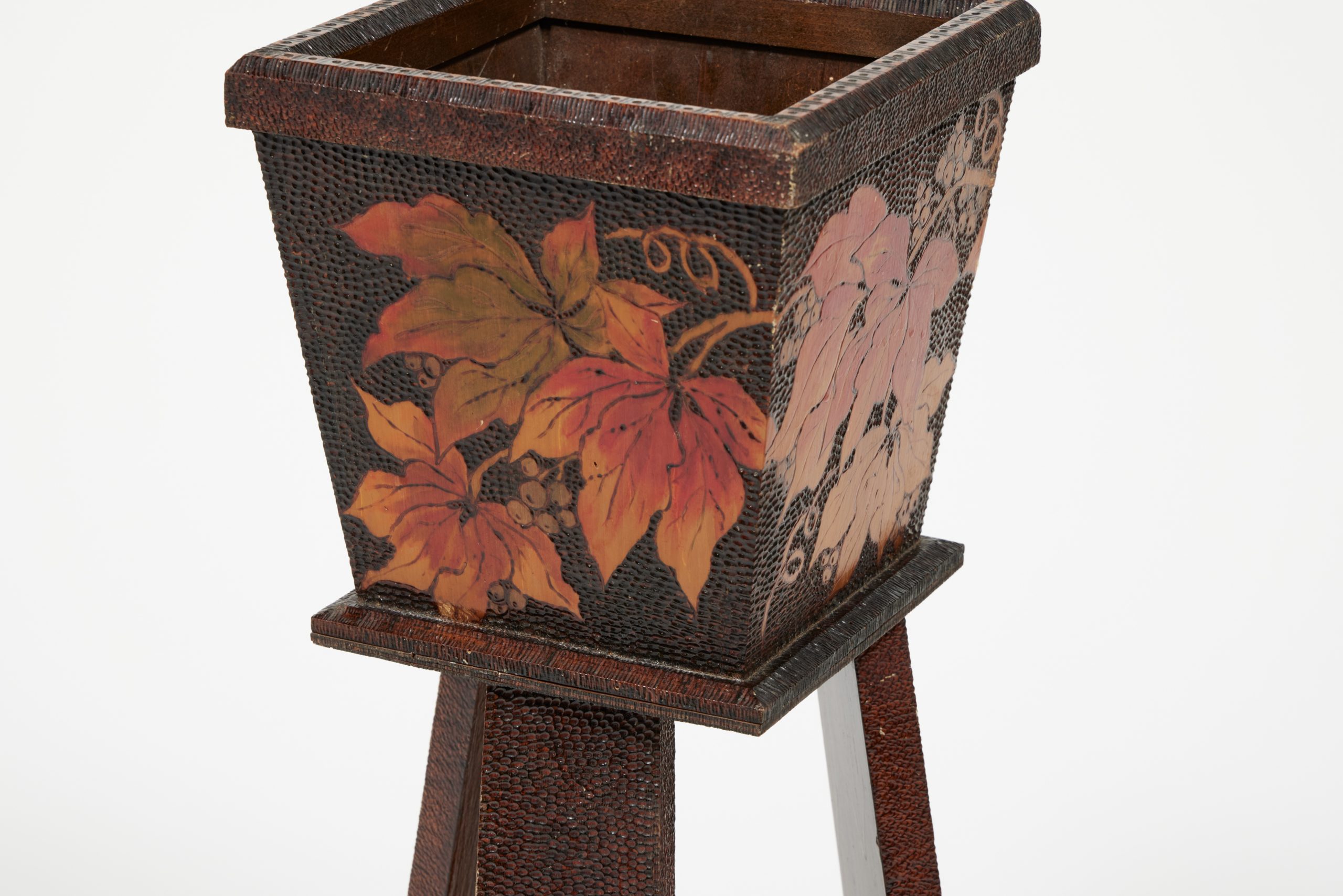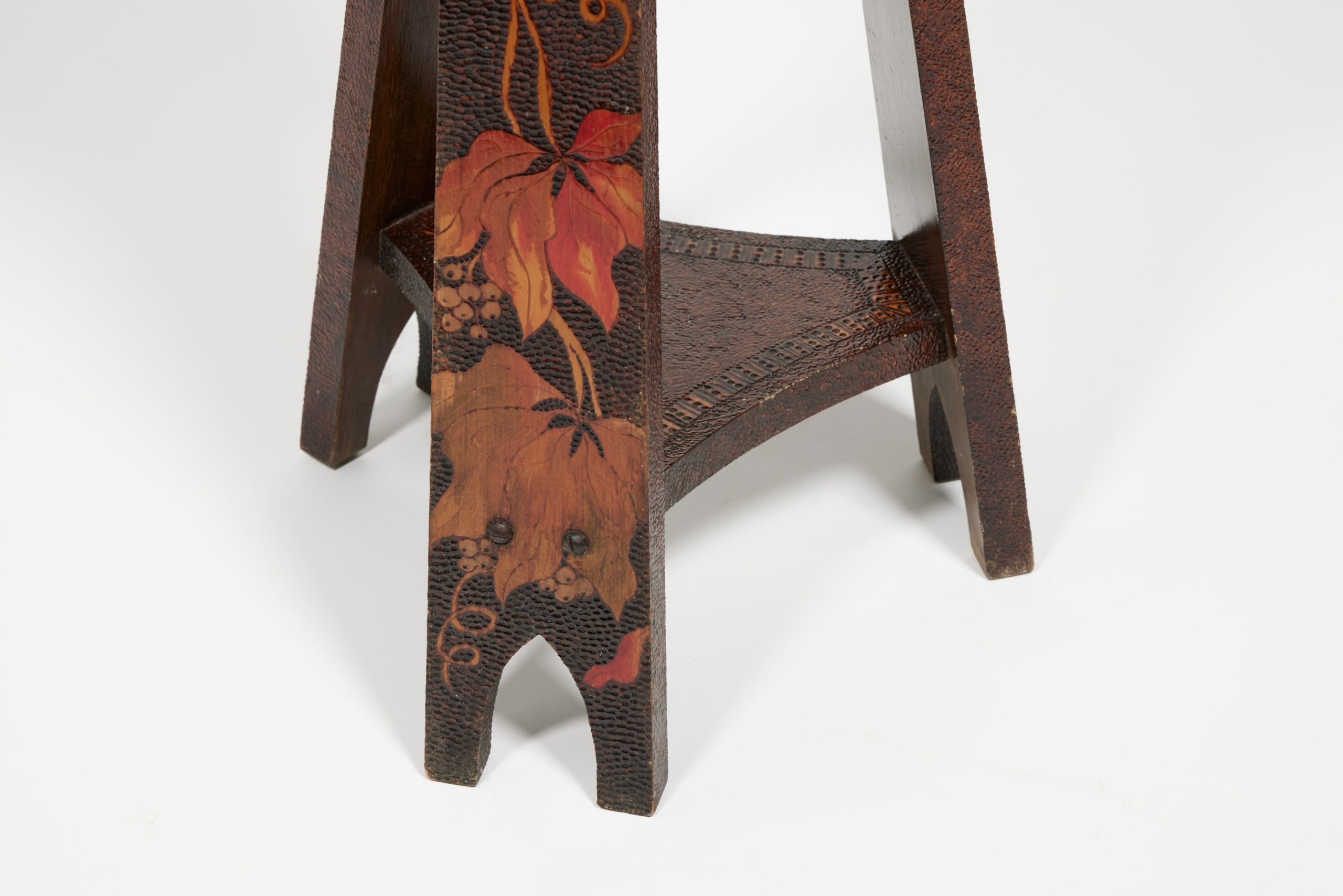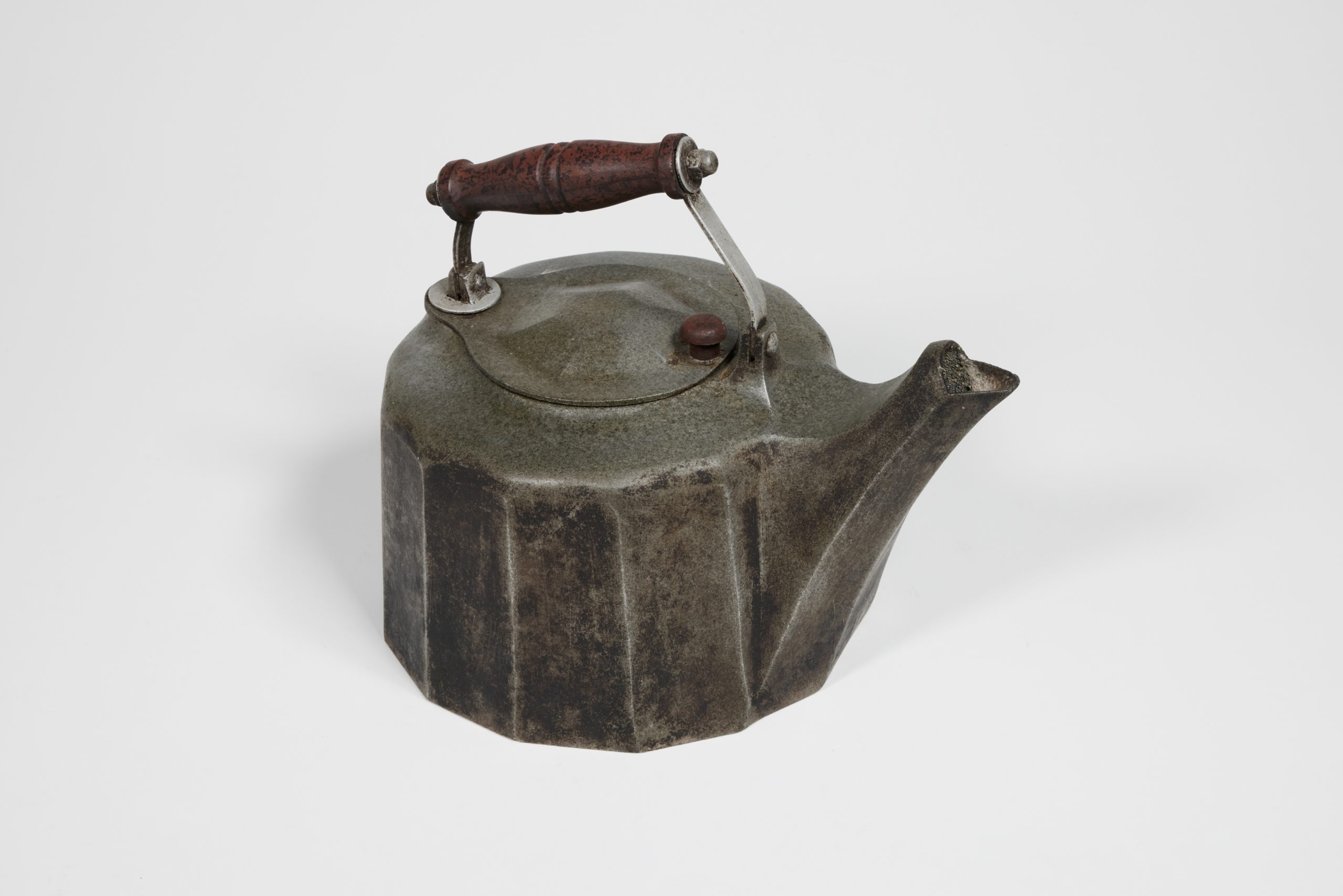Anonymous Australiana
The Art and Craft of Pokerwork
In the early twentieth century, an amateur Australian artist picked up a nail, knitting needle, or knife, heated it in the fireplace and burnt the designs of Eucalyptus leaves and nuts into these wooden napkin rings. At the time, creative Australians loved the art of pokerwork, also known as pyrography, and burned designs into any and all wooden household items.
These good, better, and best examples of the art form were collected by the founder of the Lake Tabourie Museum, Jack Nicholson. Opened in 1955, the collection is filled with a cornucopia of historical treasures he collected from the local area and beyond. As he was born in 1908 – the heyday of pokerwork – it is likely Jack had a particular fondness for the style.
Fashionable and inexpensive, it was often sold in the large department stores of the era. Both the plant stand, depicting the Virginia Creeper vine, and breadboard, with its Poinsettia leaves, are professionally made examples. Their designs were likely created with a tool called ‘The Pyro’ (a benzoline burner with a heated tip) and coloured ink.
The commercial popularity of the craft meant the identities of those who created them were often left to the wayside. However, the initials ‘MN’ on the breadboard might suggest that these examples were owned by someone in the Nicholson family. Perhaps the artist who created the napkin rings was also in their ranks?


